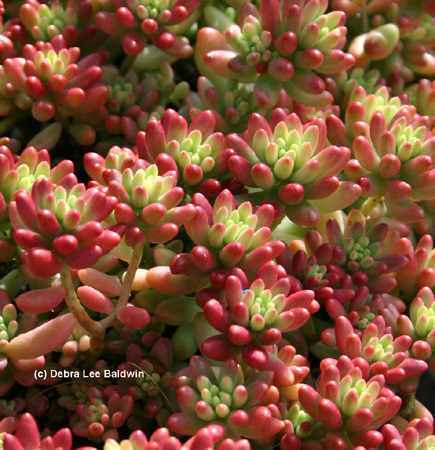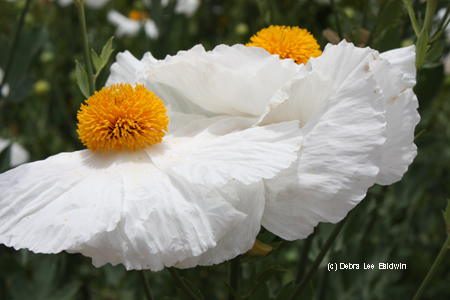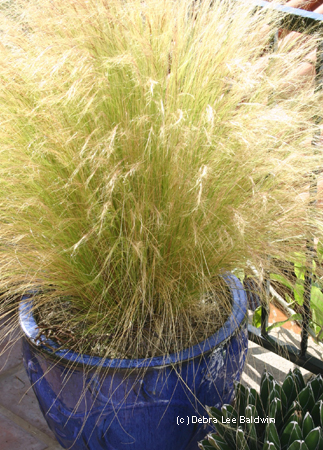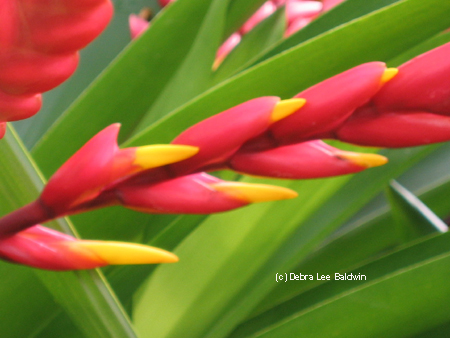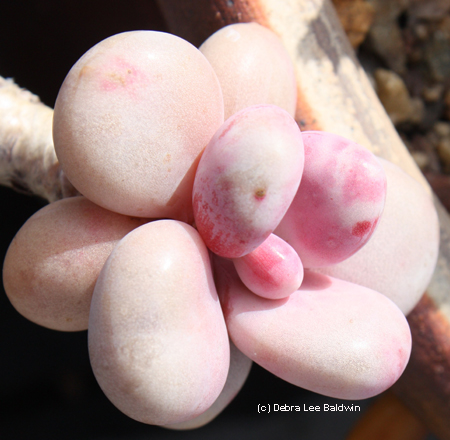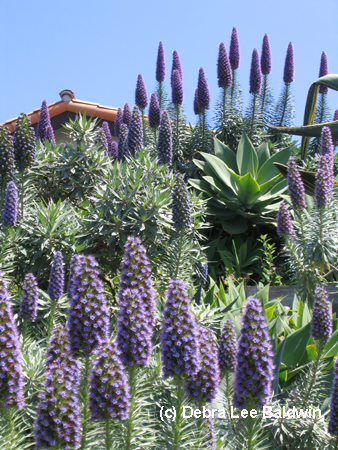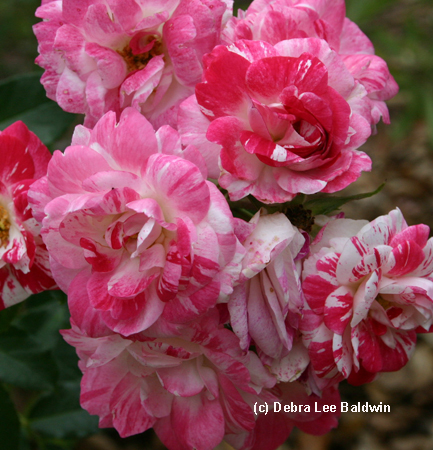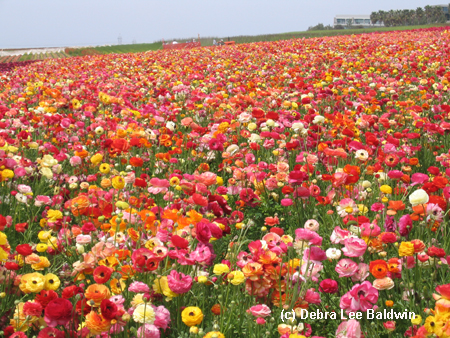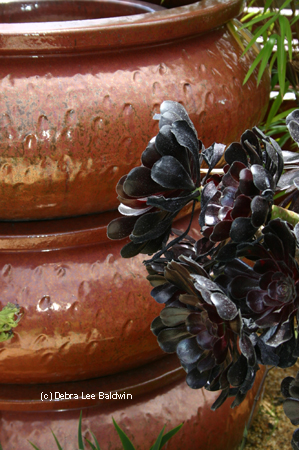One of the challenges of being a professional writer is to think metaphorically—to describe an item in terms of something else, so that readers make an association that clarifies, enlightens and perhaps also entertains. Metaphorical thinking can be learned and is a great memory aid. Food metaphors often occur to me when describing plants.
For example, matilija poppies, which have white, crepe-paper petals surrounding yellow centers, suggest sunny-side-up eggs.
Now, for your edification and amusement, I offer a few candy plants. The common name of Sedum rubrotinctum in the first photo is pork-and-beans, but I’ve always thought it should be jelly beans.
The metaphor that first comes to mind for any fine-textured, ornamental grass is hair. But if I expend a few more brain cells, I come up with cotton candy.
This bromeliad flower suggests the Halloween treat, candy corn.
This fat-leaved succulent is Pachyphytum oviferum. The genus is derived from the Latin for elephant; the species, for egg. The common name is moon stones, which is not bad, but not strongly visual, either. Were it up to me, I’d call the plant Jordan almonds (a candy used as wedding favors).
Let’s say we used “pink bubble gum” instead to describe the Jordan almonds plant. But in the same article we need a metaphor for this bromeliad flower, and it looks like pink bubblegum, too. How do you come up with something new?
One secret to thinking metaphorically is to ask yourself: “If I didn’t know what it is, what would I think it was?” That overides your left brain’s tendency to label things, and allows your right brain’s creativity to kick in.
Avoid adjectives such as “lovely,” “pretty,” “gorgeous,” “attractive,” etc. They’re throw-away words that don’t convey anything other than your opinion. Words like “large” and “small” don’t belong in descriptions, either, unless you give dimensions or are comparing one thing to another. The most annoying adjective is “unique,” because things seldom are.
Really think about what you’re seeing. Notice details. Here’s what I came up with for the bromeliad flower: Barbie-doll-pink petals, each as flat as a stick of chewing gum, have sections that create a chevron pattern.
The flower spires of Echium fastuosum (Pride of Madeira) are conical grapesicles.
Vivid, orange-red petals of Erythrina x sykesii (Australian coral tree) are canoe-shaped Hot Tamales.
A red-tipped kalanchoe’s plump leaves appear sugar-coated.
When I wrote about ‘Flower Girl’ rose for Sunset, I described the clusters as “billowing” and “cream-colored.” They also look like popcorn, but I didn’t go there. A good metaphor doesn’t call too much attention to itself. To do so is to remind the reader he’s reading, and you want him to stay in the experience. So if an editor tells you your writing is “overworked,” that may be what she’s referring to.
‘Flower Girl’ is massed with billowing bouquets of pink-blushed, popcorn blooms. Well, that’s not terrible, but I think it works better without “popcorn.” Sometimes you need to remove one piece of verbal jewelry.
Here’s the description from this rose’s online supplier: “Grace your garden with elegant peppermint-stick red blossoms streaked with creamy white and exuding a scent too sweet for words.” Too sweet for words? What a waste of words! To be fair, though, scent is difficult to describe. But each word needs to work, or it’s a waste of space and the reader’s time. A possible edit: Sweet-scented ‘Candy Stripe’ rose is peppermint pink, red and creamy white. My version is 12 words; the original, 20.
Mm. This translucent epiphyllum flower glistens like peach sherbet.
Ranunculus: Fields of floral lollipops, in Carlsbad, CA.
And you didn’t think I’d forget chocolate, did you?

